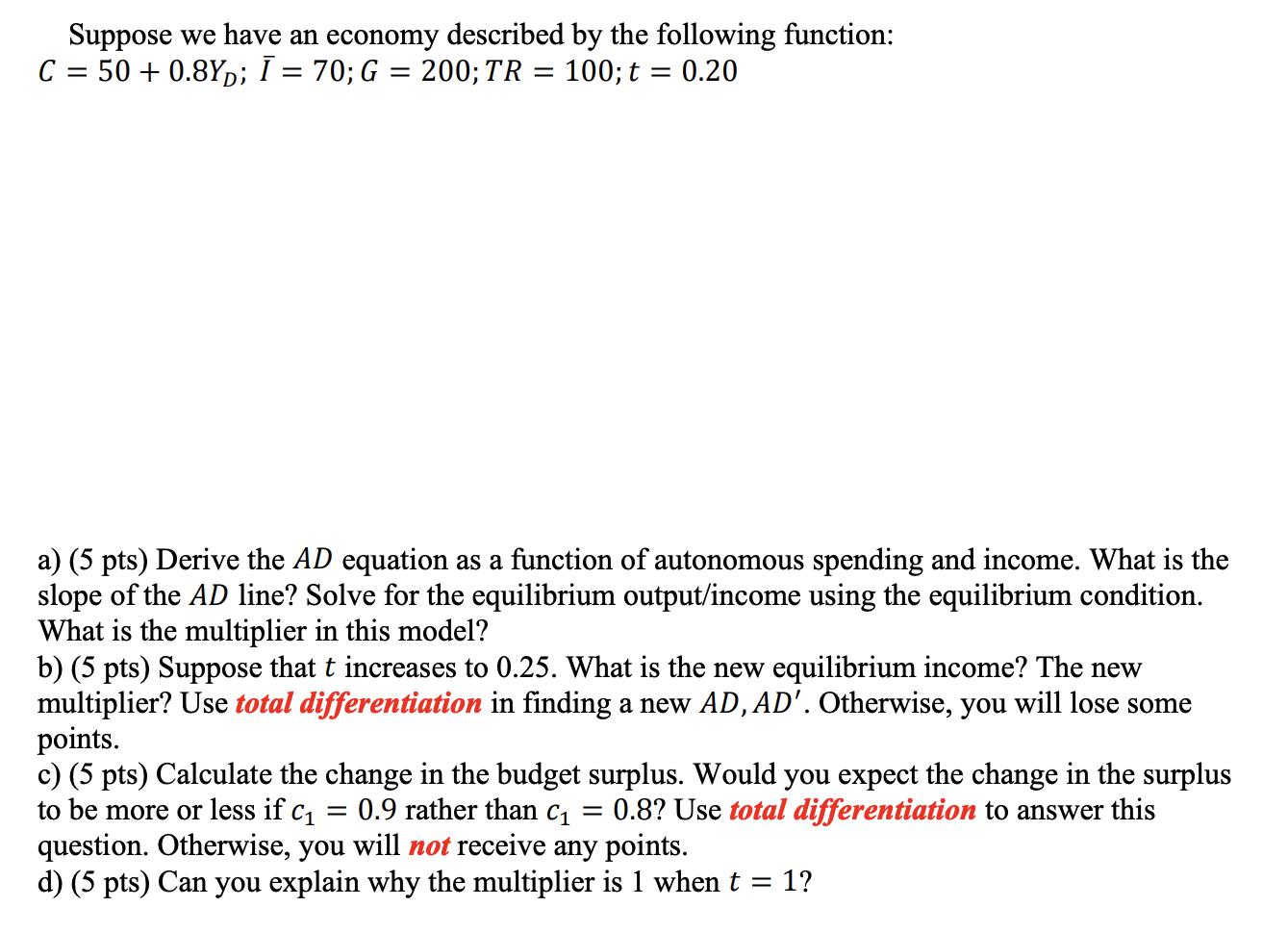Answered step by step
Verified Expert Solution
Question
1 Approved Answer
Suppose we have an economy described by the following function: C = 50+0.8YD; I = 70; G = 200; TR = 100; t =

Suppose we have an economy described by the following function: C = 50+0.8YD; I = 70; G = 200; TR = 100; t = 0.20 a) (5 pts) Derive the AD equation as a function of autonomous spending and income. What is the slope of the AD line? Solve for the equilibrium output/income using the equilibrium condition. What is the multiplier in this model? b) (5 pts) Suppose that t increases to 0.25. What is the new equilibrium income? The new multiplier? Use total differentiation in finding a new AD, AD'. Otherwise, you will lose some points. c) (5 pts) Calculate the change in the budget surplus. Would you expect the change in the surplus to be more or less if c 0.9 rather than C = 0.8? Use total differentiation to answer this question. Otherwise, you will not receive any points. = d) (5 pts) Can you explain why the multiplier is 1 when t = 1?
Step by Step Solution
There are 3 Steps involved in it
Step: 1

Get Instant Access to Expert-Tailored Solutions
See step-by-step solutions with expert insights and AI powered tools for academic success
Step: 2

Step: 3

Ace Your Homework with AI
Get the answers you need in no time with our AI-driven, step-by-step assistance
Get Started


